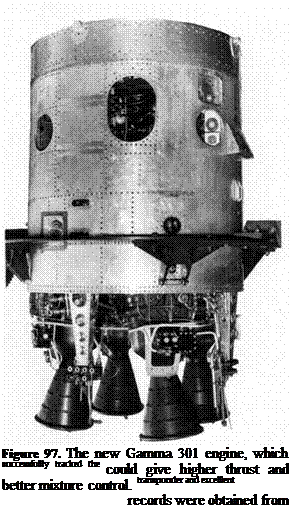BK16
Two stage. Launched 24 August 1962 at 21:08. Apogee 356 miles.
BK16 was the proving trial of the Black Knight vehicle for the further reentry physics experiments, Project Dazzle. It was a two-stage vehicle powered for the first time by a Gamma 301 engine, and a transistor control system was also tested for the first time. Ignition of the second stage was timed to occur at about 1,000,000 ft, and the head was separated from the second stage at an increased velocity in order to achieve re-entry of the head well separated (15,000 ft) from the rest of the vehicle. The head was a 15o semi-angle copper cone, shape GW20, a type to be flown later in the Dazzle programme. As with BK15, limited ground instrumentation was available to obtain some re-entry data. Dynamics and head temperature measurements during re-entry were also included in this trial.
Propulsion was very good, a re-entry velocity of 14,600 ft/second being achieved at
200,0 ft. Telemetry was successful: all engine
 pressures, control system parameters and guidance data were successfully recorded
pressures, control system parameters and guidance data were successfully recorded
Once again, as with BK15, difficulties with guidance telescope tracking necessitated a change back to radar information for guidance until telescope tracking was
resumed.
All the aims of the trial were achieved. The Gamma 301 engine and the transistor control system were both proved in flight. Separation and ignition of the second stage and separation of the head were achieved according to plan. The FPS.16 radars
which the trajectory and all events (second stage separation, spin and ignition and head separation) were determined. The range at Woomera was provided with an excellent opportunity of rehearsing for the re-entry physics experiments to follow. The head tape recorder was recovered and data on re-entry dynamics and temperatures was obtained. The trial confirmed the expected re-entry characteristics of an uncontaminated low-drag head.










